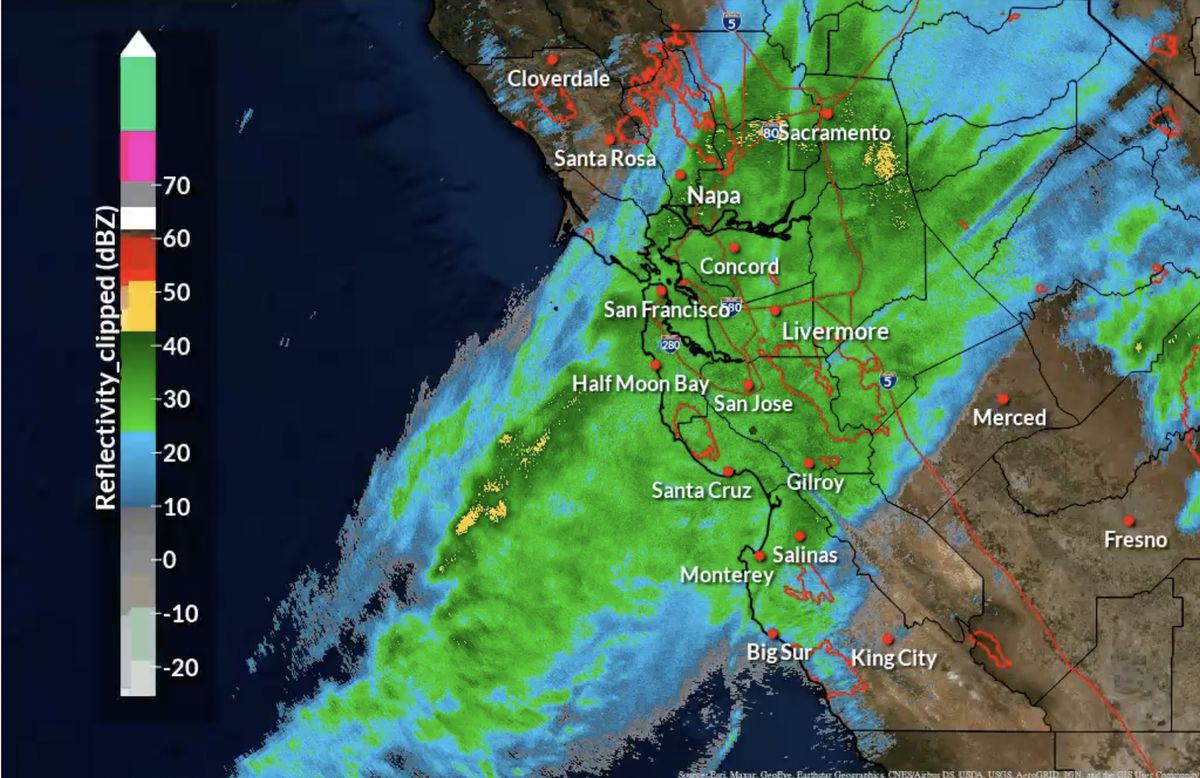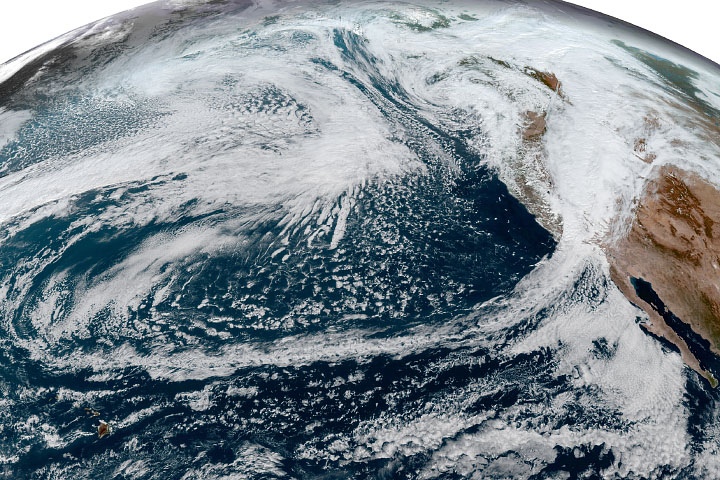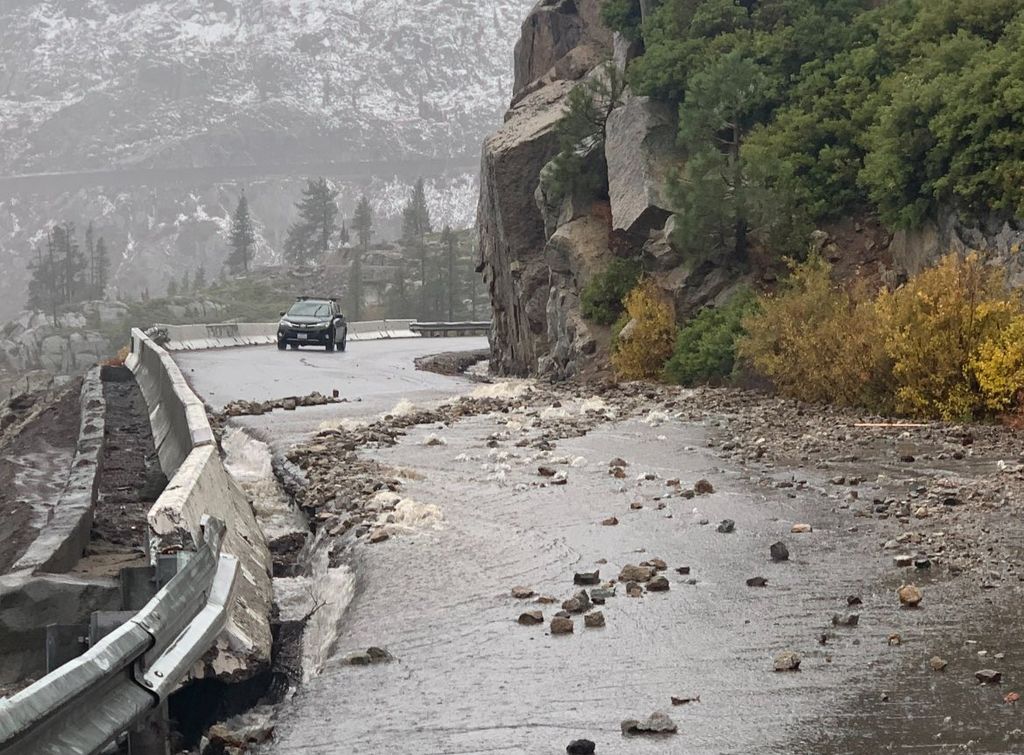Northern California was hit on Sunday by an extremely strong storm that knocked down trees and left highways covered with water from record rains. The storm also caused mudslides in areas that were burned in recent wildfires.
Two unusual weather patterns came together to cause the storm. Part of the storm was caused by a weather system called an “atmospheric river”. That’s a large, wide band of wet air coming in off the Pacific Ocean. This atmospheric river was being pushed by a “bomb cyclone”, which was heading north.

(Source: NWS Bay Area.)
“Bomb cyclone” is a phrase weather scientists use to describe a spinning storm that becomes very strong very quickly because of a rapid drop in pressure. Bomb cyclones are similar to regular cyclones or hurricanes, but aren’t as powerful and happen farther away from the equator.
The power company PG&E reported that over 630,000 of its customers had lost power. By Monday evening, power had been restored for most of those customers, but around 50,000 homes and businesses were still without electricity.

(Source: NASA’s Earth Observatory.)
The National Weather Service (NWS) expected the rains to set records in northern California, and it wasn’t wrong.
The NWS reported 16.55 inches (42 centimeters) falling in Marin County. Sacramento got 5.44 inches (13.8 centimeters) in 24 hours. That’s the most rain to fall in Sacramento in a single day since 1880. San Francisco had its fourth wettest day ever recorded. Roads and highways flooded in both cities.
😕
This image has not been loaded because of your cookie choices. To view the content, you can accept 'Non-necessary' cookies.
The National Weather Service (NWS) expected the rains to set records in northern California, and it wasn’t wrong. Marin county got 16.55 inches (42 centimeters). Sacramento and San Francisco both set records as roads and highways flooded. Above, flooding in Kentfield, California.
California is in the middle of a drought, and the rain was needed. But the heavy rainfall and California’s recent wildfires made the situation more complicated.
When the ground is very dry and has few plants, it’s hard for rain to soak in. This creates conditions that can lead to flash floods and mudslides. California’s recent drought and wildfires have killed plants and left the ground extremely dry and unable to absorb the amount of rain that has fallen.
😕
This image has not been loaded because of your cookie choices. To view the content, you can accept 'Non-necessary' cookies.
California is in the middle of a drought, and the rain was needed. But when the ground is very dry and has few plants, rain can’t soak in. This can lead to flash floods and mudslides. Above, northern California’s Lake Oroville is nearly dry.
As one weather expert put it, “We…have gone from fire/drought conditions to flooding in one storm cycle.”
In several areas close to recent wildfires, people were told to evacuate because of the danger of flash floods and mudslides. In other places, people were warned to be on the lookout for mudslides.

(Source: California Highway Patrol.)
In several counties in northern California, parts of roads and highways were closed because of landslides and mudslides. For example, California’s highway police closed part of State Route 70, which was blocked by several landslides. The landslides happened in places where the road crossed areas burned in the huge Dixie Fire.
It’s still not clear if the rain from this storm will make much of a difference in California’s drought or its current wildfire problems.
😕
This image has not been loaded because of your cookie choices. To view the content, you can accept 'Non-necessary' cookies.
It’s still not clear if the rain from this storm will make much of a difference in California’s drought or its current wildfire problems. Above, a minivan stuck on a flooded street in San Rafael, California
As the bomb cyclone headed north, tens of thousands of people in Oregon and Washington were left without power. Two people in Seattle died when their car was hit by a falling tree.
Canada’s west coast also got heavy rains and strong winds. The storm took out power for thousands of homes in British Columbia, and caused ferries in the area to be canceled.
Did You Know…?
Over the next few days, the US is expecting another storm triggered by a bomb cyclone. This time, it’s in the country’s northeast.
